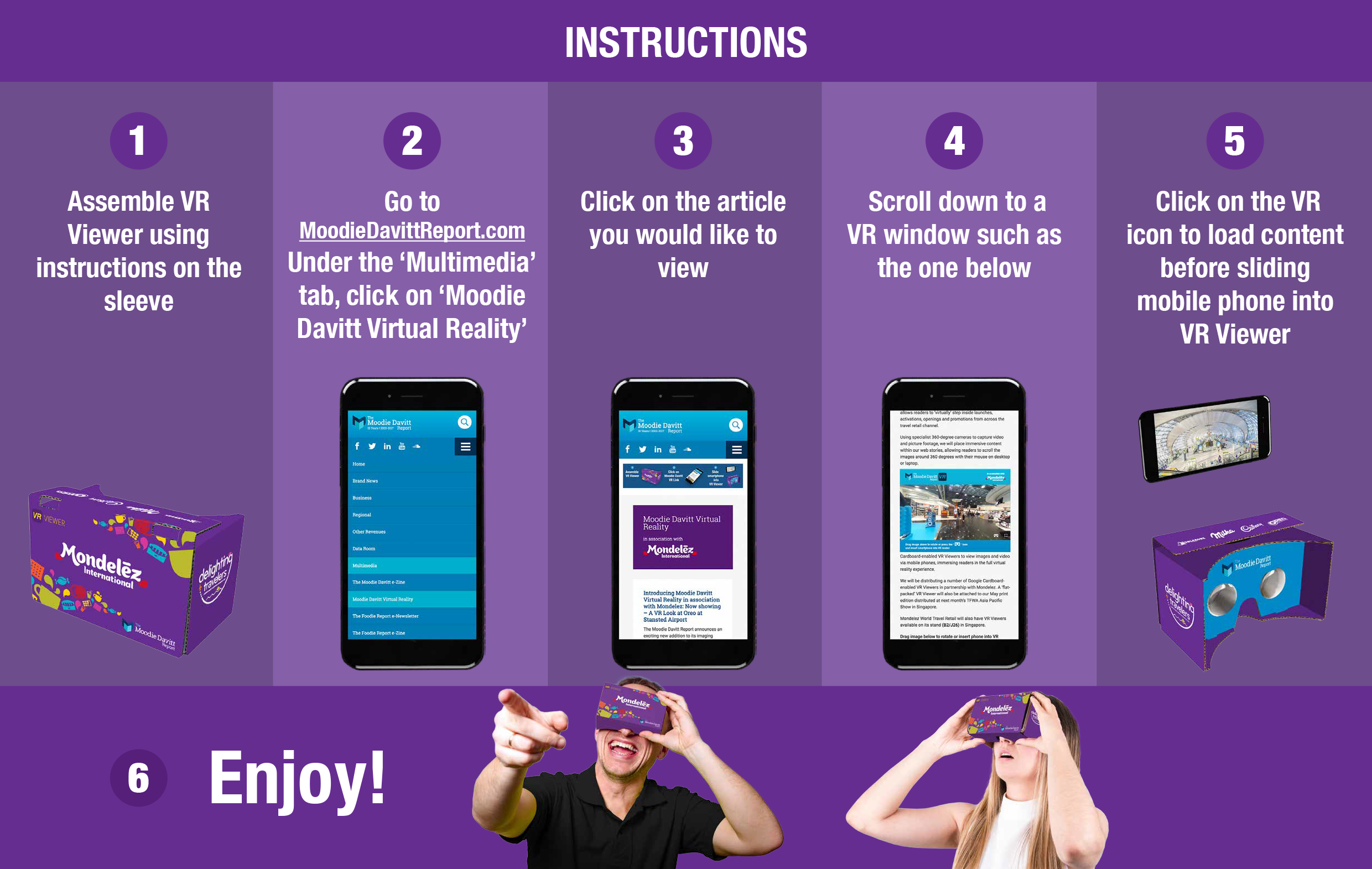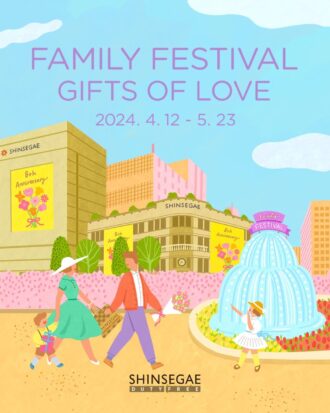
Thomas Johnson, Associate Director CGI at The Design Solution, highlights the rising role of Virtual Reality (VR) technology in the commercial world.
Throughout this article you can view a selection of VR images from our work with RIOgaleāo Tom Jobim International Airport in 2016, creating stunning new retail spaces. Simply follow the instructions below each image.
As specialist designers in airports and retail, sharing our design vision with the client can be a challenge – but the advances in Virtual Reality (VR) technology are enabling stunning new approaches that bring our designs vividly to life and help expedite decision making.
The collapse of consumer interest in 3D TV is perhaps a warning of over-emphasising the potential for new technology to become embedded into daily life but recent VR advances, such as pioneering systems from Oculus Rift and HTC Hive, have set a foundation for a global industry that hit $1billion in 2016 and is estimated to reach $40billion by 2020. The bulk of growth will, at least initially, be driven by the gaming market but the commercial applications – from car design to micro-surgery – are already strong.
[vrview img=”https://www.moodiedavittreport.com/wp-content/uploads/2017/05/View_360_1.jpg” pimg=”https://www.moodiedavittreport.com/wp-content/uploads/2017/05/View_360_1.jpg” width=”4096″ height=”2048″ ]
Commercial reality
The commercial application of VR is also growing as the technology advances and becomes cheaper (the leading headsets currently retail at c. $600-$1000) and many sector-leading brands already use the simplest fold-up cardboard headsets as marketing tools, including Lexus, Marriott, Ikea and Lowe.
The New York Times has used giveaway viewers to create a new approach to news distribution with a series of stories and features shared through the newspaper’s own VR app (nytvr). McDonalds is even testing the market (Sweden) with Happy Meal boxes that convert into VR viewers.
In travel retail, you might also have seen the recent Oreo VR activation by Mondelez at London Stansted Airport, featured here on The Moodie Davitt Report, and also Bacardi’s 2016 VR campaign for Bombay Sapphire at Heathrow last summer, creating intriguing and engaging new experiences for the shopper.
At The Design Solution we’ve been experimenting with VR for the last three years, producing high-quality immersive environments, giving us a new virtual storytelling experience to help share our design concepts with clients as an integral part of a better informed decision-making process.
This is especially helpful where they are multiple stakeholders of different disciplines with a range of agendas. Perhaps the greatest aspect of VR is its ability to cut out the subjective interpretation required of 2-D drawings and to fast-track everyone involved to share a multi-sensory spatial experience of the whole design in situ. This sharable immersiveness, including sound, is the key factor and is almost impossible to convey on screen or paper.
[vrview img=”https://www.moodiedavittreport.com/wp-content/uploads/2017/05/View_360_6.jpg” pimg=”https://www.moodiedavittreport.com/wp-content/uploads/2017/05/View_360_6.jpg” width=”4096″ height=”2048″ ]
A virtual Carioca experience!
For the client to see their project in VR definitely gives a ‘wow’ factor but it’s also hugely beneficial to understanding not only the design but also how the space will operate. The increased clarity and depth of the 360-degree stereoscopic experience is a powerful tool for an airport or brand to use in making smarter investment decisions and to pick up, at an early stage, any aspects that may have been missed in conventional design so that execution in the real world can be right first time. This immersiveness is the key factor and is almost impossible to convey on screen or paper.
King Power Senior Executive Vice President Susan Whelan has experienced the use of virtual reality in current design projects: “Using VR to express their vision and the intricacies of their plans The Design Solution has enabled us to quickly gain a powerfully detailed understanding, of how our new retail complex in downtown Bangkok could look, how it will work operationally and also how the shopper will experience it,” she notes.
“Our whole planning and development process has been greatly enhanced and expedited as a result, enabling the project team to instantly share a vividly detailed vision of the new development across our teams and our partners. It has given everyone a shared vision for discussion and refinement far more efficiently than other formats, enabling us to drive new efficiencies in the whole investment and development process.”
[vrview img=”https://www.moodiedavittreport.com/wp-content/uploads/2017/05/View_360_2.jpg” pimg=”https://www.moodiedavittreport.com/wp-content/uploads/2017/05/View_360_2.jpg” width=”4096″ height=”2048″ ]
Immersed in detail
Being fully immersed in an environment really gives the user a sense of space and place. Materials, lighting, mood, volume and scale are all fundamental parts in our design process and the detail is so strong that specific specialist elements – such as windows, lighting, floorspace, accessibility, pathways, structural issues etc – can be scrutinised individually. For example, sightline is key to a brand’s strategy. We set up our 360-degree cameras at eye level so brands can virtually stand in the space and see what the airport passengers would see on completion. It also helps understand the brand’s volume and position in the duty free store.
As the effectiveness of VR continues to grow we now actually provide our clients with Gear VR hardware as well as the designed VR images and animations and we are at an advanced stage of developing our own app, allowing them to download the project straight to their device within minutes.
[vrview img=”https://www.moodiedavittreport.com/wp-content/uploads/2017/05/View_360_3.jpg” pimg=”https://www.moodiedavittreport.com/wp-content/uploads/2017/05/View_360_3.jpg” width=”4096″ height=”2048″ ]
The next generation of headsets incorporate positional tracking that enables the user to move around in their virtual surroundings, with objects adapting to their viewing perspective. This has recently been introduced in the new IMAX complex in Los Angeles where ‘VR rooms’ create extraordinarily lifelike and fully immersive experiences, including ‘The Walk’, a breathtaking, perspiration-inducing tightrope walk between the twin towers, re-enacting French high-wire artist Philippe Petit’s famous walk. Here at The Design Solution, on terra firma, this technology will enable us to give our clients a literal virtual ‘walkthrough’ experience of the airport spaces we are designing – streamlining their investment decisions and, ultimately, creating a better experience for the airport user.
In addition, our development of VR tools to support retailers and brands will enable them to test new concepts and marketing designs and the ultimate evolution of this is to engage VR directly with consumer research groups, creating greater certainty in retail activation plans – using VR to help drive new commercial realities.
[vrview img=”https://www.moodiedavittreport.com/wp-content/uploads/2017/05/View_360_4.jpg” pimg=”https://www.moodiedavittreport.com/wp-content/uploads/2017/05/View_360_4.jpg” width=”4096″ height=”2048″ ]
FOOTNOTE:
Following the launch of an exciting new addition to our multimedia portfolio – Moodie Davitt Virtual Reality (VR) – The Moodie Davitt Report distributed Google Cardboard-enabled VR Viewers to delegates at the recent TFWA Asia Pacific exhibition. Moodie Davitt Virtual Reality (VR) has come to life in partnership with Mondelez World Travel Retail.
Readers who picked up a copy of our Print Edition during the show received a flat-packed Google Cardboard-enabled VR Viewers.
These allow readers to view images and video via mobile phones, immersing readers in the full virtual reality experience.
All virtual reality images and video presented in the months ahead on The Moodie Davitt Report will be viewable on VR-enabled devices including: Google Cardboard, Google Daydream, Samsung Gear VR, HTC Hive, LG 360VR and Huawei VR and PlayStation VR – as long as the device has the capability to browse The Moodie Davitt Report website.
Stories on The Moodie Davitt Report website with VR enabled images and video will be housed in a special VR Library, which is accessible on the multimedia tap at the top of the homepage or by following this link: https://www.moodiedavittreport.com/category/the-moodie-davitt-report-virtual-reality-library/
Google Cardboard VR works with most modern Android phones. Phones need to be running Android 4.1 (Jelly Bean) or above. Ideally they should support NFC too. Cardboard will also work with iPhone 6 and above.






